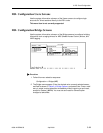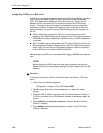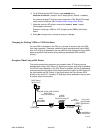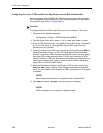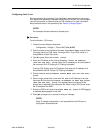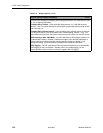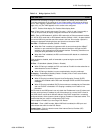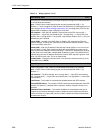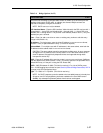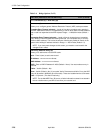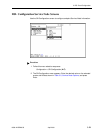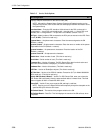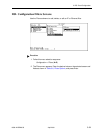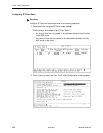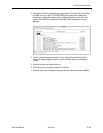
3. DSL Card Configuration
8000-A2-GB26-50 April 2001
3-27
Client VNID Table A-E-E
Gives the user the ability to configure static clients on VNIDs. Up to 32 entries per DSL
interface (static users, DHCP users, or subnets) are allowed. Multiple screens are
required to completely configure the interface.
NOTE: DHCP users can only be deleted.
DSL Interface Name
–
Enter the DSL interface. Valid choices for the DSL card are dsl1:1
through dsl4:1 = 4-port DSL card interface; dsl1:1 through dsl12:1 = 12-port DSL card
interface, dsl1:1 through dsl24:1 = 24-port DSL card interface (Default = dsl1:1). Only one
interface per port is allowed.
User
– Enter 0 to add a new client or enter an existing entry number to edit this entry.
Range 0–32 (Default = 0).
IP Address
– For single users, enter the client IP address in
nnn.nnn.nnn.nnn
format
(Default = none). A space deletes the entry. (This field is required.)
Subnet Mask
– For multiple users with IP addresses in the same subnet, enter both the
IP address and the subnet mask in
nnn.nnn.nnn.nnn
format.
CAUTION: The same subnet cannot be assigned to multiple ports. An error message
will appear if the IP address of the next hop router is not in the same subnet as the
client IP address. Geographically dispersed clients are supported through static
host-specific entries only.
NHR
– Enter the IP address of the next hop router in
nnn.nnn.nnn.nnn
format, if different
than the default for the VNID (Default = none). (This field is optional if the port/VNID has a
default NHR entry or if the port is using the DSL Router SN).
VNID
– VNID ID between 2–4000. (This field is read-only.) For a list of VNIDs, press
Ctrl-v. If VNID tagging has not been set (see
General (General Bridge Parameters) A-E-A
on page 3-24), this field displays None.
Type
– S = Static or D = Dynamic. (This field is read-only.)
NOTE: If a DHCP response cannot be added to the host table because it already has
32 entries, and if IP scoping/filtering has been enabled on the Card VNID screen
(
A-E-B
), any subsequent upstream packets from that host are dropped.
Table 3-4. Bridge Options (4 of 5)



